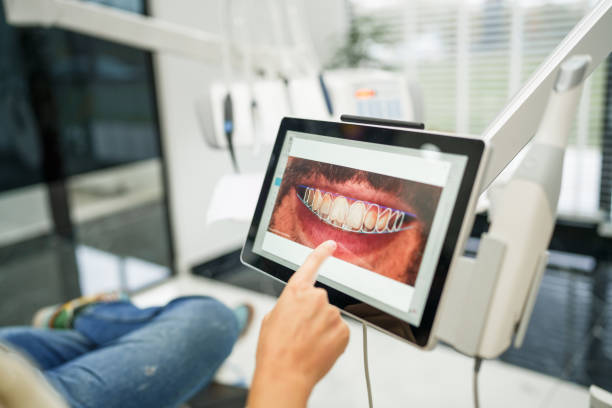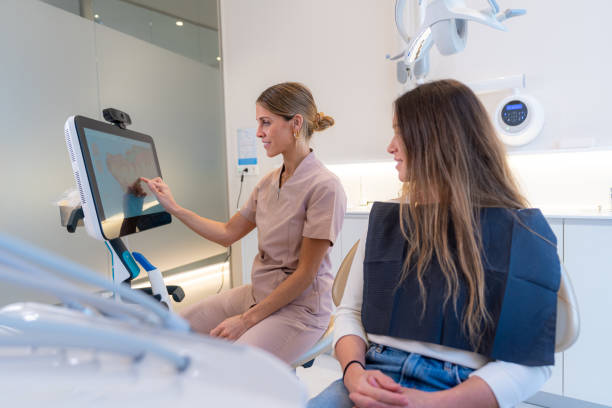A great smile does more than improve how you look—it shows who you are. But sometimes, smile makeovers can look perfect in photos or videos and still feel wrong in real life. Why? Because they don’t match your personality.
This is exactly what can happen when digital smile design goes wrong. DSD is a modern dental tool that uses photos, videos, and 3D scans to plan a smile makeover. But when it’s used without considering a person’s face shape, natural expressions, or unique character, the result can feel unnatural—even if it looks “perfect” on screen.
Dr. Jaydev, a UK-trained dentist with over 15 years of experience, has helped hundreds of patients with successful smile makeovers. As a leading dentist and smile design specialist in Hyderabad, he believes that every smile should feel as good as it looks.
“A smile should never feel like it was copied from someone else. It should match your face, your expressions, and most importantly—your personality,” says Dr. Jaydev.
What Is Digital Smile Design and Why Is It Popular?

Digital Smile Design (DSD) is a high-tech process that allows cosmetic dentists to map out and simulate a patient’s smile makeover using photographs, videos, and 3D scans. The goal is to harmonize the smile with facial features and expressions before making any permanent changes.
Its popularity stems from several advantages:
- Predictability:Patients can preview the final outcome in advance.
- Customization:Every element—from tooth size to gingival contour—can be digitally adjusted.
- Precision:The workflow reduces human error, ensuring more accurate results.
Yet despite these advancements, technology can’t automatically interpret human personality, subtle facial cues, or cultural expectations. That’s where the problem begins.
Here’s where things can go wrong.
When Smile Design Misses the Mark
Sometimes, dentists focus only on perfect shapes and proportions. They might ignore the little things that make your smile yours—like the way your lips move or how your cheeks lift when you smile.
This can lead to:
- A smile that’s too perfect and doesn’t match your expressions.
- Teeth that are too white, too straight, or too big for your face.
- Results that feel fake or unnatural.
This is when wrong smile design results start to show. People feel like the smile doesn’t belong to them. It may look good in photos but feel uncomfortable in real life.
This is what people actually experience.
Real-Life Impacts of a Mismatched Smile

Many people who have had a bad smile design experience say they don’t like smiling anymore. Even after spending time and money, they feel less confident because the smile doesn’t feel right.
Here are some common problems:
- Feeling awkward in photos or public.
- Reluctance to smile freely, fearing judgment or drawing attention.
- Regretting the decision.
- Losing trust in cosmetic dentistry.
These are often signs of a personality mismatch in smile makeover. It’s not that the dental work is wrong—it just wasn’t made for you.
Smiles aren’t just about teeth—they affect how others see and respond to you.
The Psychology of Facial Harmony and Smile Perception
Your smile needs to fit your whole face. If it doesn’t, people may notice something feels “off,” even if they can’t explain why. This is called facial harmony—when your features and expressions all work together naturally.
Problems often happen when:
- The teeth are too white for your skin tone.
- The smile shape doesn’t match your personality (e.g., bold teeth on a shy face).
- Your smile looks great when still, but not when talking or laughing.
These are some of the digital smile design side effects that come from focusing too much on perfection—and not enough on personal fit.
Here’s how to get it right.
How to Avoid a Personality Mismatch in Smile Design

It starts with choosing the right cosmetic dentist. Look for someone who:
- Talks to you about your personality and lifestyle.
- Doesn’t just use software—they use judgment and experience.
- Let’s you test how your new smile looks and feels before final treatment.
- Understands the importance of balance, not just perfection.
Also, speak up during your consultation. Tell your dentist:
- What kind of smiles you like (natural, bold, soft, elegant).
- Whether you prefer subtle changes or a full transformation.
- If there is a specific look you are trying to avoid.
This helps prevent cosmetic dentistry mistakes and ensures the smile suits you, not just a digital model.
Conclusion
Digital Smile Design has changed the way we approach cosmetic dentistry—but it’s not just about high-tech visuals or perfect proportions. A truly successful smile makeover reflects who you are, not just what looks good on paper.
Dr. Jaydev, one of the most trusted smile design specialists in Hyderabad, emphasizes that “Your smile should represent your personality—not replace it.” With his expertise in both aesthetics and facial harmony, patients can avoid the pitfalls of a mismatched smile and enjoy results that feel natural, confident, and uniquely theirs.
Frequently Asked Questions
Q1. Can a smile makeover be redone if I’m unhappy?
Yes. In most cases, your smile can be changed or improved. A skilled cosmetic dentist can review your current smile and suggest what can be adjusted for a better result.
Q2. How do I know if a smile design will suit my face?
Your dentist should evaluate your full face, not just your teeth. They may also show you a trial version of your smile so you can see how it looks before starting treatment.
Q3. Do cosmetic dentists consider personality traits?
The best ones do. They look at more than just your mouth—they consider how you speak, smile, and express yourself. This helps create a smile that feels like you.
Q4. Is Digital Smile Design suitable for everyone?
Yes, but it works best when combined with personal judgment. The software helps, but the final decision should be based on how well the smile fits your face and personality.

